Showing 1–12 of 15 results
-
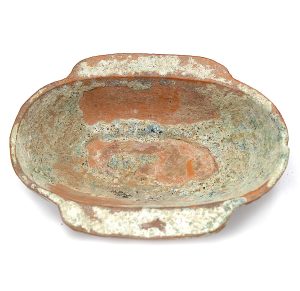
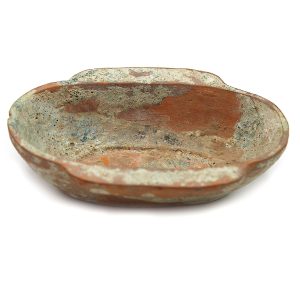
$450.00
Wing or ear cups (yushang), a term that describes its side flange-like additions to its ovoid body, appeared as early as the Zhou dynasty (1046-256 BCE) made in lacquer and later from a variety of materials. Lacquerware cups were used as dining vessels used for rituals and ceremonies contain fragrances, food or wine; and the…
-
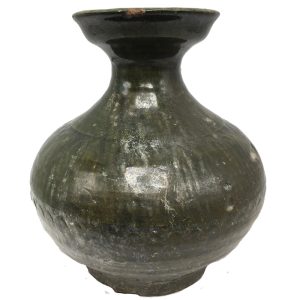
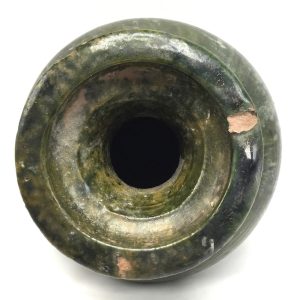
$595.00
Hu vessels, first made in the Shang Dynasty is an ancient-pottery wine vessel whose body swells in the middle, flares into a narrow neck and often has a raised circular foot. Very popular during the Han dynasty, it was used as an ancestral tomb burial object (mingqi) to hold liquids and elixirs for the deceased…
-
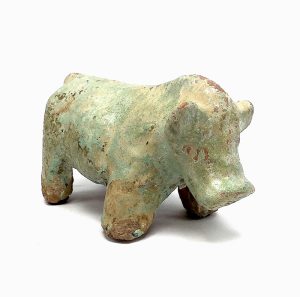
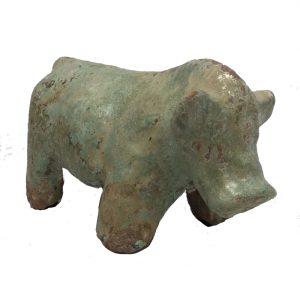
$395.00
Mingqi are ancient earthenware pottery items usually made using a bivalve mould and covered with a lead glaze that fired to a dark green. The lead in the glaze often combined with tomb dampness for centuries creating a chemical reaction changing its coloring into a lustrous and iridescent green seen here. Han mingqi were ancestral…
-
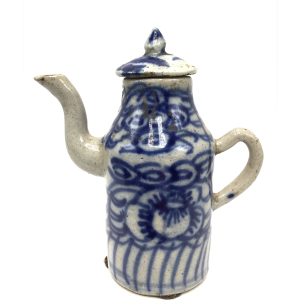
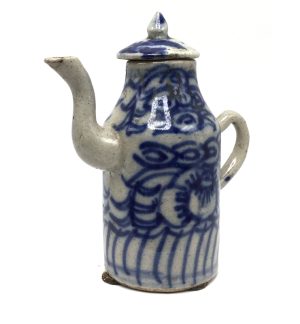
$135.00
This charming miniature ewer or small pitcher was made during the Tongzhi Period 1856-1875) and used to pour soy sauce, oils or other liquids. The spout and handle are elegantly curved and thick cobalt blue designs are set on a spotted grey ground with a chrysanthemum on each side and abstract plantain curved vertical leaf…
-
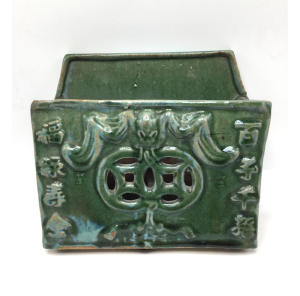
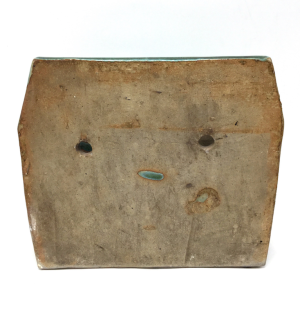
$185.00
Shiwan stoneware wall pockets were used to hold functional items like flowers and chopsticks and were in most Chinese homes by the late Qing Dynasty. Chopsticks holders were symbols for fertility and traditionally part of a dowry as the word for chopsticks (kuizi) is a pun for ‘speedy arrival of sons’ Perhaps having a two-part…
-
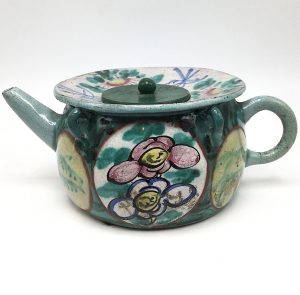
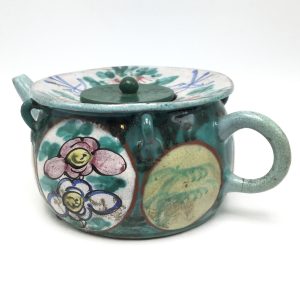
$365.00
Yixing stoneware pottery items are among the most popular of Asian ceramics. The clay comes from an area near Yixing city and has been used to make teaware and pouring-vessels since the Ming Dynasty. When fired, the clay becomes very insulating allowing it to retain heat, and since it is naturally porous it can absorb…
-
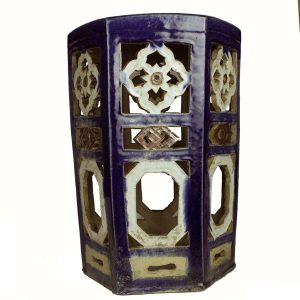
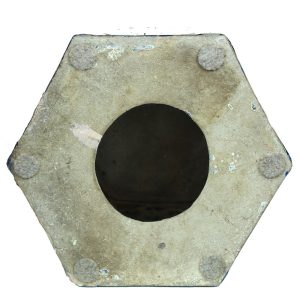
$1,450.00
The top design on this stoneware garden stool is a simplified open narcissus with a white and yellow center; it is a symbol of good fortune and prosperity. Below are intertwined double lozenges, followed on the lowest register of by white octagonal shapes and ending with a low orange-yellow rectangle pierced in the center. A…
-
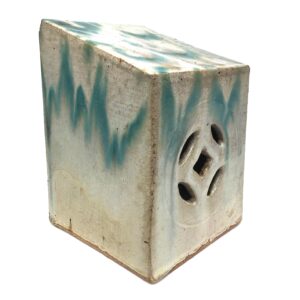
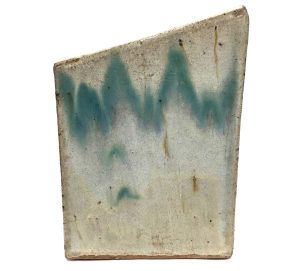
$235.00
For centuries Chinese believed ceramic pillows increased the health, vitality and comfort of the body and soothe the spirit. Their surfaces provided coolness during hot weather and were preferred over soft pillows which were believed to rob the body’s vitality and energy. Made with a variety of glazes and designs, it was believed a pillow…
-
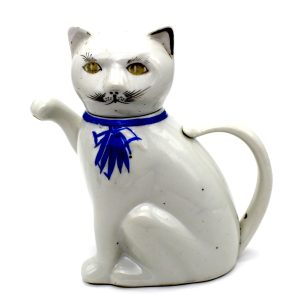
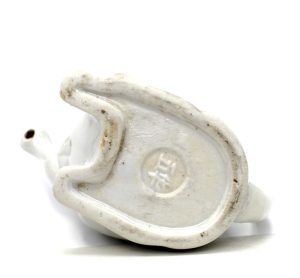
$145.00
In China and Japan cats are often portrayed as small-teapots that provide individualized tea servings and better retain heat. White porcelain with a clear glaze was often the preferred pottery form for teaware as it was viewed as more elegant. Since Mao (猫), the word for cat, is a homophone for octogenarian, it is a…
-
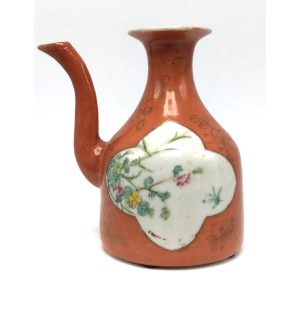
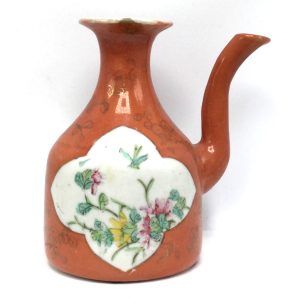
$235.00
This gorgeous porcelain ewer is covered in a saffron glaze, also called red coral glazed porcelain, created by potters in the Qing dynasty as a variety of new glazes at that time including a new coral red variety known as shan hu hong. This low-fired iron red glaze had a yellow tinge resembling the color…
-
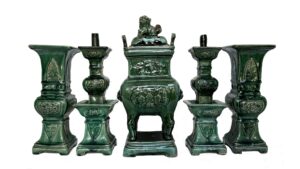
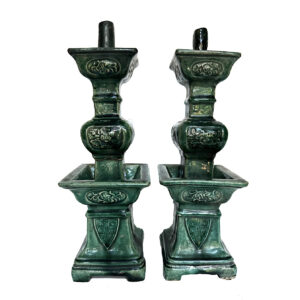
$2,950.00
This 5-piece apple green glazed stoneware home altar set includes a central large censor flanked by rising pairs of candlestick holders and vases. These folk art ceramics were made at the Shiwan kilns in a small town near Foshan City in Guangdong Province where renowned, popular and well modeled pieces with vivid expression and colorful…
-
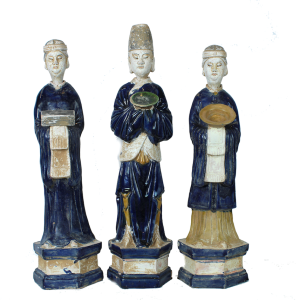
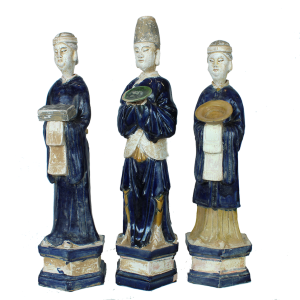
End of content
End of content
























